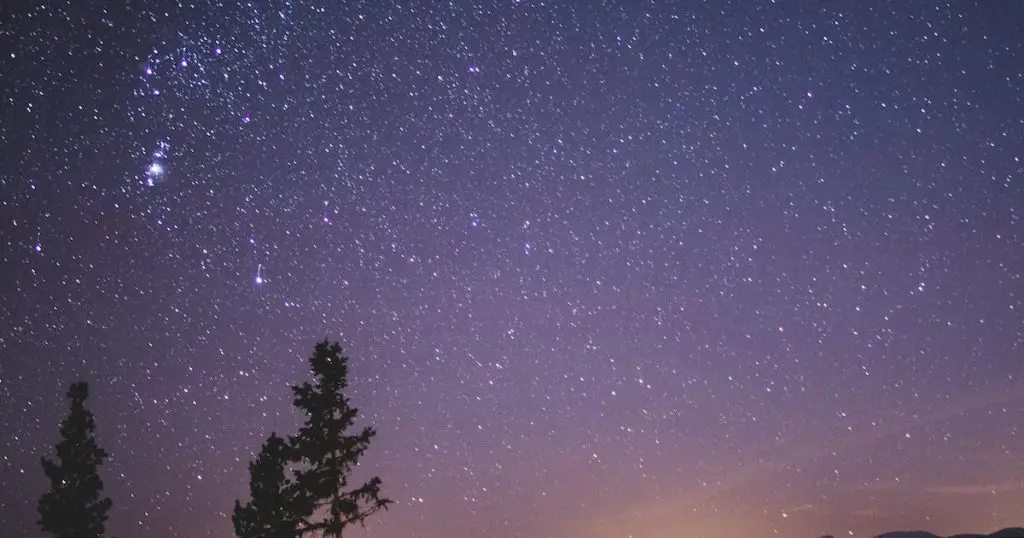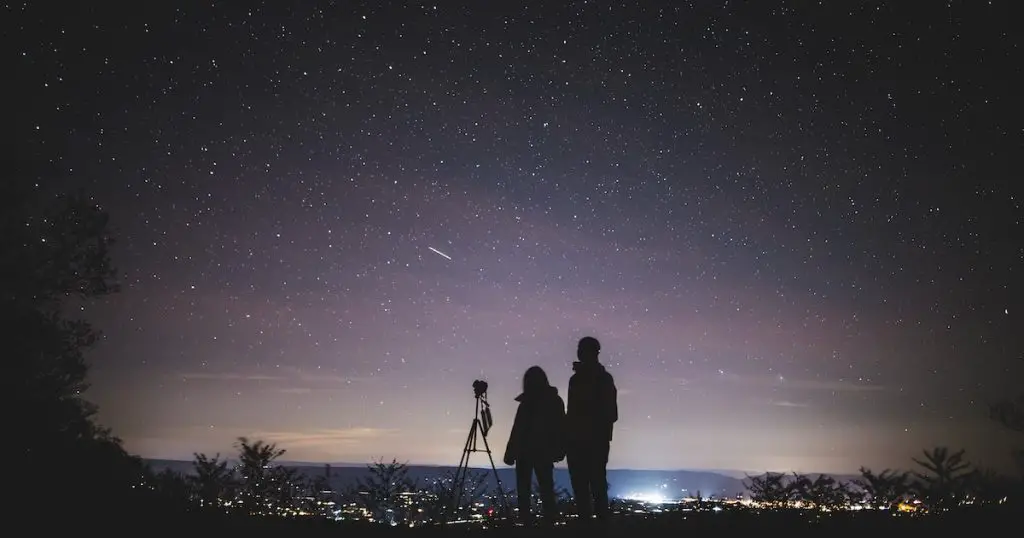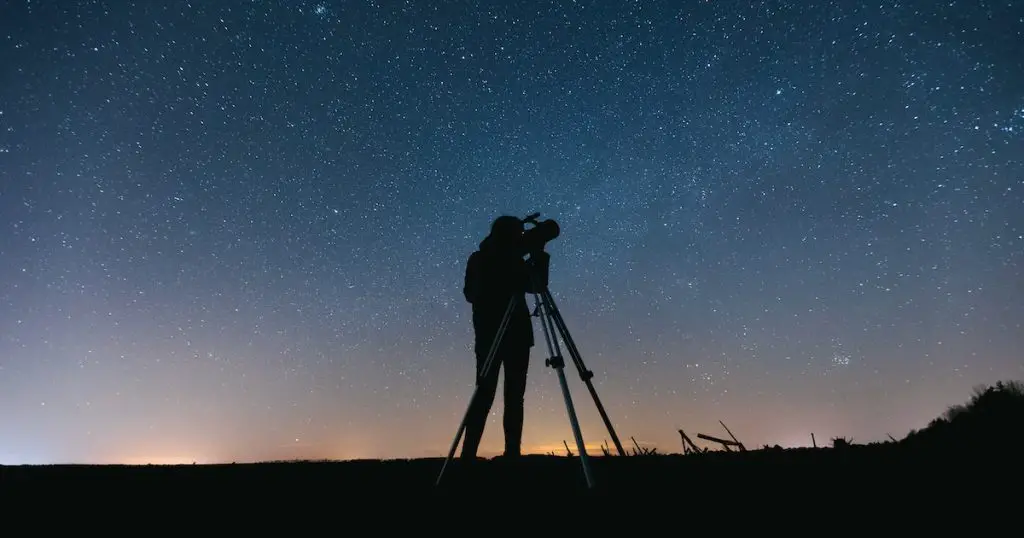The night sky has always held a special allure for humanity. Its vastness, beauty, and mysteries have driven many of us to look up in awe. In recent years, a growing number of enthusiasts have been discovering the joys of stargazing at natural landmarks around Prescott.

The combination of Prescott’s pristine environments, minimal light pollution, and breathtaking natural wonders make it an idyllic setting for both seasoned astronomers and casual stargazers.
Why Prescott Is a Stargazer’s Dream
Prescott, located in the heart of Arizona, is blessed with a high desert climate that brings about some of the crispest and clearest views of the night sky. The dry atmosphere reduces the scattering of starlight, allowing celestial objects to shine more brightly.
On top of this, Prescott remains relatively untouched by the bane of all stargazers: light pollution. This rarity in our modern world means the Milky Way, planets, and even distant galaxies become visible to the naked eye.
According to the International Dark Sky Association, areas like Prescott are becoming increasingly vital for astronomical research and the growing hobby of stargazing.
The Best Time to Go Stargazing in Prescott
There’s a rhythm to the cosmos, and knowing this rhythm can greatly enhance your stargazing experience. For instance, moon phases are critical. A new moon night is perfect for observing deep-sky objects since there’s no moonlight to wash out fainter stars.
Seasons, too, play a part. Summer nights may introduce viewers to the densest part of the Milky Way, while winter evenings highlight constellations like Orion. The American Meteor Society often provides details on meteor showers, many of which peak during specific months, enhancing Prescott’s night sky spectacle.
Preparation for a Night Under the Stars
Stargazing, like any outdoor activity, requires a bit of preparation. Firstly, a good stargazing map or app can be invaluable. Websites like Sky & Telescope offer insights and charts for nightly celestial events.
Safety should be a priority. Prescott’s terrains, while beautiful, can be challenging. Ensure you have comfortable shoes, warm clothing, and possibly a red flashlight – red light preserves night vision better than conventional white light.
Watson Lake
Situated just 4 miles from Prescott, Watson Lake offers a splendid backdrop of the Granite Dells, coupled with a reflective surface that almost doubles the starry expanse. As you settle by its shores, the play of stars on the placid waters adds a magical touch to the experience.
For astrophotographers, this location is a dream come true. The lake’s mirror effect, when captured correctly, can result in some truly jaw-dropping images. Websites like AstroBackyard provide tips and techniques that can be applied wonderfully here.
Granite Dells
The ancient rock formations of the Granite Dells stand as silent sentinels against a backdrop of twinkling stars and swirling galaxies. These billion-year-old granite bulwarks provide both an earthly and celestial spectacle.

Apart from the obvious visual allure, the Dells are also a favorite spot for those looking to capture the cosmos through their camera lenses. With the rugged terrain juxtaposed against the soft glow of stars, the photographic opportunities are endless.
Thumb Butte
One of Prescott’s most iconic landmarks, Thumb Butte, offers stargazers an elevated platform. Climbing this unique formation can be rewarding not just for the views from the top, but also the enhanced stargazing potential.
Several trails wind their way around and up the butte. Each offers secluded spots that shield you from any stray lights, creating pockets of near-perfect darkness where the universe feels just a touch closer.
Lynx Lake
Another gem in Prescott’s crown, Lynx Lake, offers a serene setting complemented by dense forests. The reflection of constellations on its surface creates a surreal ambiance, perfect for a night of contemplation and cosmic wonder.
Furthermore, the proximity of camping spots ensures that enthusiasts can prolong their stargazing adventure. With the gentle chirping of crickets, the rustling of leaves, and the expansive sky above, it’s an experience that is both humbling and exhilarating.
Spruce Mountain
Higher altitudes can often mean clearer skies. Spruce Mountain, standing tall at over 7,600 feet, is a testament to this. Once you reach its summit, the celestial panorama that unfolds is simply unparalleled.
Deep-sky objects, usually invisible from lower altitudes, begin to make their presence felt. With a good telescope, nebulae, star clusters, and even distant galaxies come into view. The Planetary Society frequently discusses the advantages of high-altitude stargazing, making Spruce Mountain a spot you shouldn’t miss.
Goldwater Lake
Tucked away amidst dense pine forests, Goldwater Lake provides another stargazing spot that combines water and sky. Here, if conditions are right, it’s even possible to see the glint of planets reflecting off the water’s surface.
The enveloping forest ensures minimal light interference. As you lay back on its shores, the whispers of the woods combined with the silent ballet of the stars create an atmosphere of tranquil introspection.
Prescott National Forest
Prescott National Forest, spanning over 1.25 million acres, is a vast expanse of wilderness that hides countless stargazing spots. As you delve deeper into this wooded realm, the artificial world fades, and nature – both terrestrial and celestial – takes center stage.

With so many secluded areas, it’s not uncommon to find a spot where you’re the sole observer of the night sky. Here, the connection between humans and the cosmos becomes almost palpable, making each stargazing session a deeply personal experience.
Astronomy Clubs and Local Resources
Being a hotspot for stargazers, Prescott boasts a vibrant community of astronomers. The Prescott Astronomy Club, for instance, often organizes events and star parties. These gatherings are perfect for beginners, as experienced members share their knowledge, insights, and even their telescopes.
Star parties, in particular, are a fantastic way to dive into the world of stargazing. The collective experience, shared enthusiasm, and combined knowledge make for an enriching evening under the stars.
Astrotourism and its Impact on Prescott
Astrotourism, the blend of tourism and astronomy, has been steadily rising, and Prescott stands at the forefront. As visitors flock to experience its dark skies, the local economy has seen a boost. Hotels, restaurants, and tour guides all benefit from this influx of starry-eyed tourists.
Yet, with popularity comes responsibility. As more and more people are drawn to Prescott’s celestial wonders, there’s a growing need to ensure sustainable stargazing. Initiatives by organizations like The World at Night emphasize the importance of preserving these dark skies for future generations.
Stargazing Events and Festivals in Prescott
Prescott’s calendar is dotted with celestial events. Meteor shower viewings, for example, draw crowds from all over the country. Events such as the Perseids in August or the Geminids in December transform the night sky into a celestial fireworks display.
Beyond meteor showers, other annual events celebrate various celestial phenomena. Some gatherings focus on the equinoxes, solstices, or even rare celestial alignments. These events are not only great for observing but also serve as educational platforms.
Lectures, workshops, and interactive sessions help attendees deepen their understanding of the cosmos. The Astronomical Society of the Pacific provides resources and information on many such events, ensuring enthusiasts are well-prepared.
Connecting Culture: Native American Starlore
The skies above Prescott have been observed for centuries, long before telescopes and stargazing apps. The indigenous tribes of the region, such as the Yavapai, have their own rich traditions and stories related to the stars.
For these tribes, celestial bodies weren’t just distant luminous points; they were entwined with their myths, legends, and spiritual beliefs. For example, certain constellations were seen as ancestors or revered animals, guiding their daily lives and seasonal migrations.
Engaging with these ancient narratives adds depth to the stargazing experience. Learning about how the Milky Way was perceived as the “path of spirits” or how meteor showers were interpreted can provide a fresh, culturally-enriched perspective.
The Museum of Northern Arizona often hosts exhibitions and talks on this subject, bridging the gap between ancient lore and modern astronomy.
Getting Kids Involved: Stargazing for the Younger Generation
Introducing children to the wonders of the night sky is perhaps one of the most rewarding experiences. Their innate curiosity and wonderment can transform a simple stargazing session into an adventure.
Ways to Engage Kids:
- Stellar Storytelling: Link constellations to their mythological stories.
- Spot the Satellite: Use apps to identify and track passing satellites.
- Moon Mapping: Observe the moon’s craters and seas with a simple telescope or binoculars.
Resources like NASA’s website for kids offer fun and educational activities. By instilling a love for the stars early on, we’re not just entertaining them but also sowing the seeds for the next generation of astronomers.
Challenges and Solutions for Stargazers
Every hobby has its challenges, and stargazing is no different. Cloud cover, for instance, can be a persistent spoiler. Yet, sometimes, these clouds can be a boon, especially when they’re lit by a nearby town, creating a dramatic canvas for night photography.

Another challenge, and possibly the most pressing one, is light pollution. Even in places like Prescott, there are pockets where city lights dim the brilliance of the night sky. But solutions exist. Adopting shielded outdoor lighting and promoting awareness can go a long way.
Organizations like The International Dark-Sky Association work tirelessly to combat this issue and offer guidelines for individuals and communities alike.
FAQs:
In this section, we will be delving into some of the most common inquiries and curiosities that surround our topic.
What are the best months for stargazing in Prescott?
While stargazing can be enjoyed year-round, the summer and early fall months often offer clearer skies and longer nights. Meteor showers in August and December are particularly noteworthy.
How can beginners get started with stargazing?
Start with a good stargazing app or a night sky map. Joining local clubs or attending star parties can also be beneficial.
Are there any guided stargazing tours available?
Yes, several local organizations and clubs offer guided tours, especially during celestial events or festivals.
How can locals contribute to preserving dark skies in Prescott?
Using shielded outdoor lighting, supporting local dark sky initiatives, and spreading awareness about light pollution are effective ways.
Summary: Stargazing at natural landmarks around Prescott
Stargazing at natural landmarks around Prescott is more than just a pastime—it’s a journey that bridges the gap between Earth and the cosmos. The pristine landscapes, rich cultural history, and thriving stargazing community make Prescott a haven for those looking to connect with the universe.
Whether you’re a seasoned astronomer, a budding enthusiast, or someone just looking for a serene escape, Prescott’s starlit skies beckon with the promise of countless cosmic wonders. As we look up and lose ourselves in the vast expanse, we’re reminded of our tiny yet significant place in the grand tapestry of the universe.



Leave a Comment
You must be logged in to post a comment.